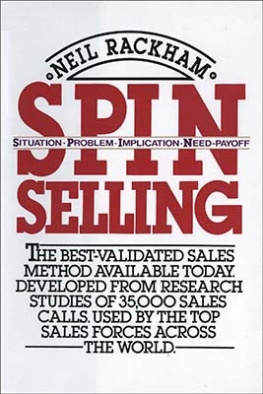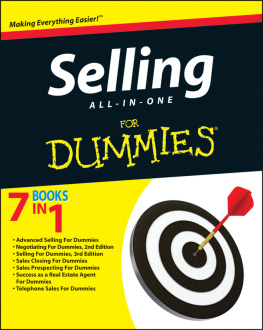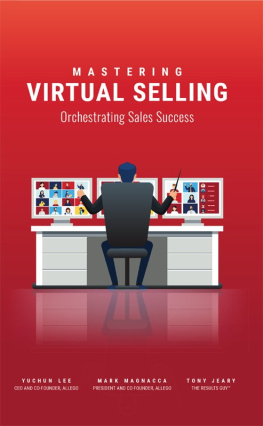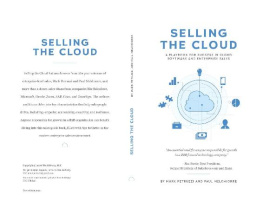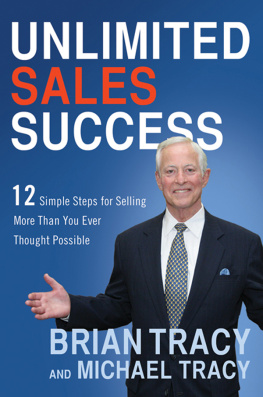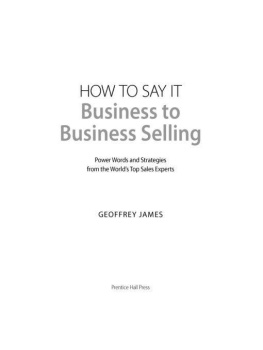Copyright 2017 by McGraw-Hill Education. All rights reserved. Except as permitted under the United States Copyright Act of 1976, no part of this publication may be reproduced or distributed in any form or by any means, or stored in a database or retrieval system, without the prior written permission of the publisher.
ISBN: 978-1-26-002709-9
MHID: 1-26-002709-0.
The material in this eBook also appears in the print version of this title: ISBN: 978-0-07-051113-2, MHID: 0-07-051113-6.
eBook conversion by codeMantra
Version 1.0
All trademarks are trademarks of their respective owners. Rather than put a trademark symbol after every occurrence of a trademarked name, we use names in an editorial fashion only, and to the benefit of the trademark owner, with no intention of infringement of the trademark. Where such designations appear in this book, they have been printed with initial caps.
McGraw-Hill Education eBooks are available at special quantity discounts to use as premiums and sales promotions or for use in corporate training programs. To contact a representative, please visit the Contact Us page at www.mhprofessional.com.
TERMS OF USE
This is a copyrighted work and McGraw-Hill Education and its licensors reserve all rights in and to the work. Use of this work is subject to these terms. Except as permitted under the Copyright Act of 1976 and the right to store and retrieve one copy of the work, you may not decompile, disassemble, reverse engineer, reproduce, modify, create derivative works based upon, transmit, distribute, disseminate, sell, publish or sublicense the work or any part of it without McGraw-Hill Educations prior consent. You may use the work for your own noncommercial and personal use; any other use of the work is strictly prohibited. Your right to use the work may be terminated if you fail to comply with these terms.
THE WORK IS PROVIDED AS IS. McGRAW-HILL EDUCATION AND ITS LICENSORS MAKE NO GUARANTEES OR WARRANTIES AS TO THE ACCURACY, ADEQUACY OR COMPLETENESS OF OR RESULTS TO BE OBTAINED FROM USING THE WORK, INCLUDING ANY INFORMATION THAT CAN BE ACCESSED THROUGH THE WORK VIA HYPERLINK OR OTHERWISE, AND EXPRESSLY DISCLAIM ANY WARRANTY, EXPRESS OR IMPLIED, INCLUDING BUT NOT LIMITED TO IMPLIED WARRANTIES OF MERCHANTABILITY OR FITNESS FOR A PARTICULAR PURPOSE. McGraw-Hill Education and its licensors do not warrant or guarantee that the functions contained in the work will meet your requirements or that its operation will be uninterrupted or error free. Neither McGraw-Hill Education nor its licensors shall be liable to you or anyone else for any inaccuracy, error or omission, regardless of cause, in the work or for any damages resulting therefrom. McGraw-Hill Education has no responsibility for the content of any information accessed through the work. Under no circumstances shall McGraw-Hill Education and/or its licensors be liable for any indirect, incidental, special, punitive, consequential or similar damages that result from the use of or inability to use the work, even if any of them has been advised of the possibility of such damages. This limitation of liability shall apply to any claim or cause whatsoever whether such claim or cause arises in contract, tort or otherwise.
Contents
Preface
This is yet another book about how to sell more successfully. So what makes it different from the more than 1000 sales books already published? Two things:
1. Its about the larger sale. Almost all existing books on selling have used models and methods that were developed in low-value, one-call sales. In the 1920s, E. K. Strong carried out pioneering studies of small sales that introduced such new ideas to selling as features and benefits, closing techniques, objection-handling methods, and open and closed questions. For more than 60 years, these same concepts have been copied, adapted, and refined with the assumption that they should apply to all sales. Even the few writers who have tried to give some advice on larger sales have based many of their ideas on these older models. And thats a mistake, because the traditional strategies of how to sell just dont work in the fast-moving and complex environment of todays major sale.
This, I believe, is the first book to take a completely fresh look at larger sales and the skills you need to make them succeed. As youll see, many of the things that help you in smaller sales will hurt your success as the sale grows larger. Major sales demand a new and different set of skills, and thats what this book is about.
2. Its based on research. This is the first publication of results from the largest research project ever undertaken in the selling-skills area. My team at Huthwaite analyzed more than 35,000 sales calls, over a period of 12 years, to provide the hard facts on successful selling that youll read here. There are plenty of opinions on how to sell, but a real shortage of well-researched facts. I carried out the research described in this book because I wasnt satisfied with opinions. I wanted proof. And now, after a million dollars of research, I can give you well-documented evidence about how to be more successful in larger sales.
Im writing for those who are serious about sellingwho see their selling as a high-level profession needing all the skill and care that go with professionalism in any field. And Im writing about how to make major salesthat significant business which has the margins and rewards attractive to high-level sales professionals. In our studies weve worked with top salespeople from more than 20 of the worlds leading sales organizations. From watching them in action during major sales, weve been able to find out what makes them so successful. Thats the subject of this book.
But how do you know that the methods Ill be describing can help you be more effective? Im confident that they will, and my confidence is based on something more substantial than just hope. When we first discovered the methods described in this book, we werent sure whether they would help people sell more effectively. For one thing, many of our findings were controversial and directly contradicted most existing sales training; for another, we werent sure whether the methods used by successful professionals would be too difficult for most people to learn.
So we kept quiet about our findings for 7 years, testing out the practical value of our ideas before we were ready to publish them. During that time we trained several thousand salespeople in the methods we describe here, continuously experimenting to find the best way to turn our theoretical knowledge of sales success into simple and practical methods that could help anyone become more effective in major sales. We measured the productivity gains of the first thousand people we trained, comparing them with control groups from the same companies. The people wed trained showed an average increase in sales volume of 17 percent more than the control groups. Consequently, Im confident that this book gives well-tested methods for increasing sales results. Its already helped thousands of people be more successful in larger salesand it can give the same help to you.
More than 10,000 sales people in 23 countries generously agreed to let Huthwaite researchers travel with them and observe them in action during sales calls. This book is about them and for them with our thanks. Then I must thank upwards of 1000 sales managers who have been part of programs weve run across the world and who have helped refine the ideas Im presenting here.
Finally, at last count, there were more than 100 people who were closely involved in the research itself and in the development of our ideas. I cant include them all, but special mention must go to Peter Honey and Rose Evison, who worked with us to develop the original behavior-analysis methodology we used in our research. From this methodological base, we were able to produce some initial measurement instruments that let us take the first-ever scientific, quantitative look at sales calls. In those early stages Roger Sugden deserves special mention as the first member of the Huthwaite research team to use these early methods.


